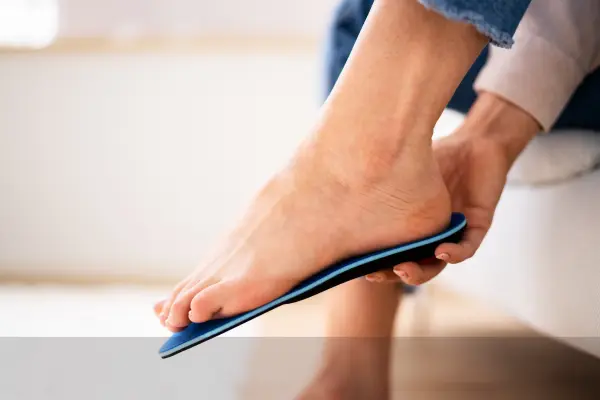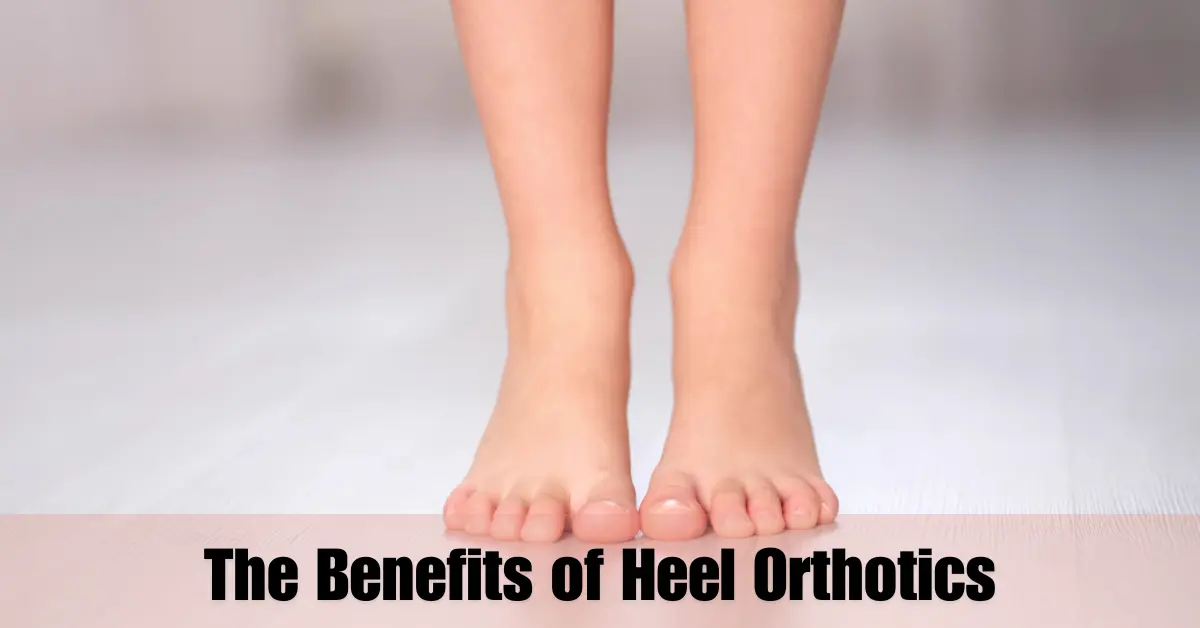Have you ever experienced discomfort or pain in your feet after a long day of standing or walking? If so, you’re not alone. Many people suffer from foot-related issues that can significantly affect their daily lives. One effective solution to alleviate such problems is heel orthotics.
These devices, often overlooked, can provide substantial benefits to those struggling with foot pain and other related issues. But what exactly are heel orthotics, and how can they help you? Let’s dive into the world of heel orthotics to uncover their benefits and why they might be the solution you’ve been looking for.
What Are Heel Orthotics?

Heel orthotics are specially designed inserts that you place inside your shoes to provide additional support and comfort to your feet. They can be made from various materials, including foam, gel, and plastic, and are engineered to address specific foot issues. These orthotics help distribute your body weight more evenly across your feet, reducing pressure on your heels and alleviating pain.
How Do Heel Orthotics Work?
Heel orthotics work by realigning the structures in your foot to promote better posture and balance. Imagine your feet as the foundation of a building. If the foundation is unstable, the entire structure can suffer. Similarly, if your feet are not properly supported, it can lead to pain and discomfort not only in your feet but also in other parts of your body such as your knees, hips, and lower back. Heel orthotics help to correct these imbalances, providing a stable foundation for your body.
Who Can Benefit from Heel Orthotics?
Many people can benefit from using heel orthotics, including those with:
- Plantar fasciitis
- Flat feet
- High arches
- Heel spurs
- Achilles tendonitis
- Arthritis
Even if you don’t have a specific medical condition, you might still benefit from heel orthotics if you spend long hours on your feet or engage in activities that put extra stress on your feet, such as running or hiking.
Types of Heel Orthotics
There are several types of heel orthotics available, each designed to address different needs:
Cushioning Heel Orthotics
These provide extra padding to reduce shock and alleviate pain in the heel area. They are typically made from soft materials like gel or foam.
Supportive Heel Orthotics
These are designed to provide additional support to the arch and heel. They are usually made from firmer materials to help correct foot posture.
Corrective Heel Orthotics
These are custom-made orthotics designed to address specific foot alignment issues. They can help to correct structural abnormalities and provide relief from chronic pain.
Heel Orthotics for Plantar Fasciitis
Plantar fasciitis is a common condition that causes pain in the heel and bottom of the foot. Heel orthotics can be particularly beneficial for those suffering from this condition. They provide arch support and cushioning to reduce strain on the plantar fascia, which can help alleviate pain and promote healing.
Heel Orthotics for Flat Feet
Flat feet, or fallen arches, can lead to pain and discomfort in the feet and lower body. Heel orthotics designed for flat feet provide the necessary arch support to reduce pain and improve foot function. They help to distribute weight more evenly across the feet, which can prevent overpronation and associated problems.
Heel Orthotics for High Arches
High arches can cause excessive pressure on the heel and ball of the foot, leading to pain and discomfort. Heel orthotics for high arches offer cushioning and support to reduce pressure and provide relief. They also help to improve shock absorption, which can be beneficial for those with high arches.
Choosing the Right Heel Orthotics
Selecting the right heel orthotics depends on your specific needs and the type of foot issue you are dealing with. It’s essential to consider factors such as:
- Material: Choose a material that offers the right balance of cushioning and support for your needs.
- Fit: Ensure that the orthotics fit well inside your shoes and provide adequate support.
- Type of activity: Consider the type of activities you will be engaging in while wearing the orthotics.
Custom vs. Over-the-Counter Heel Orthotics
Custom Heel Orthotics
These are tailored specifically to your feet and are designed to address your unique foot structure and issues. They are usually prescribed by a podiatrist and can provide more precise support and correction.
Over-the-Counter Heel Orthotics
These are readily available and can be a more affordable option. While they may not offer the same level of customization as custom orthotics, they can still provide significant relief and support for common foot issues.
How to Properly Use Heel Orthotics
To get the most benefit from your heel orthotics, it’s important to use them correctly. Here are some tips:
- Gradual Adjustment: When you first start using orthotics, gradually increase the amount of time you wear them each day to allow your feet to adjust.
- Proper Fit: Ensure that the orthotics fit well in your shoes and do not cause additional discomfort.
- Regular Replacement: Over time, orthotics can wear out and lose their effectiveness. Make sure to replace them as needed.
Common Misconceptions About Heel Orthotics
There are several misconceptions about heel orthotics that can prevent people from using them effectively. Here are a few:
- Only for Athletes: While athletes can benefit greatly from orthotics, they are not the only ones who can use them. Anyone with foot pain or discomfort can benefit.
- Too Expensive: While custom orthotics can be pricey, there are many affordable over-the-counter options available.
- Uncomfortable: Properly fitted orthotics should not be uncomfortable. If they are, it’s important to consult a professional for adjustments.
Caring for Your Heel Orthotics
Proper care can extend the life of your heel orthotics and ensure they continue to provide the support you need. Here are some tips:
- Cleaning: Regularly clean your orthotics with mild soap and water. Avoid soaking them or using harsh chemicals.
- Inspection: Periodically inspect your orthotics for signs of wear and tear. Replace them if they become worn out.
- Proper Storage: Store your orthotics in a cool, dry place when not in use.
The Impact of Heel Orthotics on Daily Life
Heel orthotics can have a significant impact on your daily life by reducing pain, improving comfort, and enhancing your overall foot health. They can make activities like walking, running, and standing for long periods more comfortable and enjoyable.
Success Stories: Real-Life Experiences with Heel Orthotics
Many people have experienced life-changing benefits from using heel orthotics. Here are a few success stories:
- John’s Journey: John, a teacher, struggled with chronic foot pain that made standing in the classroom unbearable. After using heel orthotics, he found significant relief and was able to teach comfortably again.
- Sarah’s Story: Sarah, an avid runner, dealt with severe plantar fasciitis that sidelined her from her favorite activity. Custom orthotics helped her get back on track, and she’s now running pain-free.
- Mike’s Miracle: Mike, a construction worker, suffered from flat feet and associated knee pain. Supportive heel orthotics provided the arch support he needed, reducing his pain and improving his work performance.
Conclusion
Heel orthotics are a valuable tool for anyone dealing with foot pain or discomfort. By providing the necessary support and cushioning, they can alleviate pain, improve foot function, and enhance overall quality of life. Whether you have a specific foot condition or simply want to improve your comfort, heel orthotics can be a worthwhile investment.
FAQs
What are the benefits of heel orthotics?
Heel orthotics provide support, reduce pain, improve foot alignment, and enhance overall foot function.
How long do heel orthotics last?
The lifespan of heel orthotics varies depending on the material and how often they are used. Typically, they can last anywhere from six months to a few years.
Can I use heel orthotics in any type of shoe?
While heel orthotics can be used in most types of shoes, it’s important to ensure a proper fit. Some shoes, like high heels or very tight shoes, may not accommodate orthotics well.
Are custom heel orthotics worth the investment?
Custom heel orthotics can provide more precise support and correction for specific foot issues, making them worth the investment for many people.
How do I know if I need heel orthotics?
If you experience persistent foot pain, discomfort, or have a diagnosed foot condition, consulting with a podiatrist can help determine if heel orthotics are right for you.

